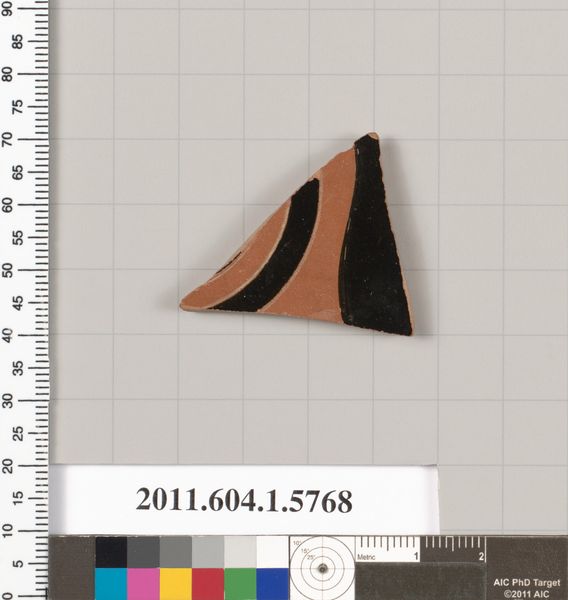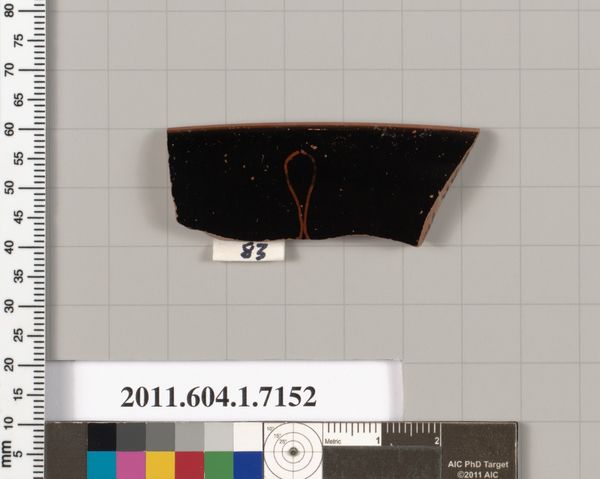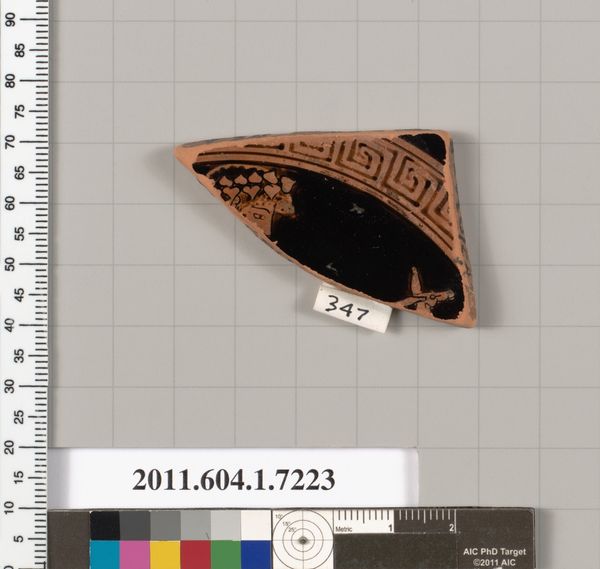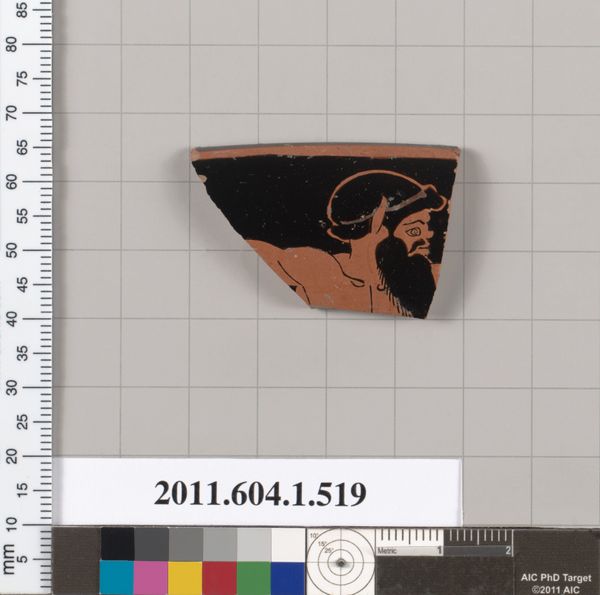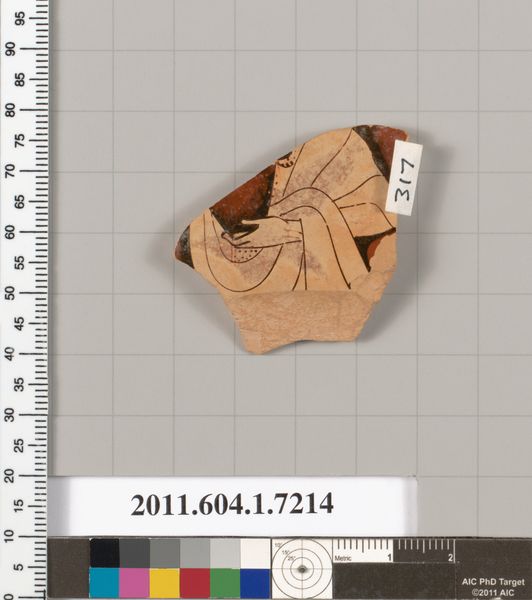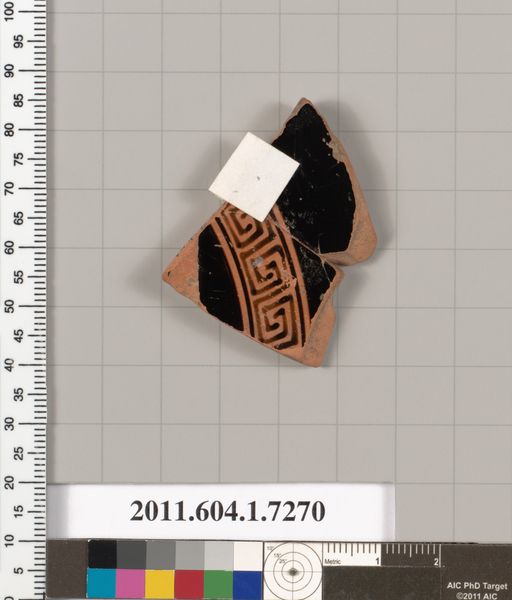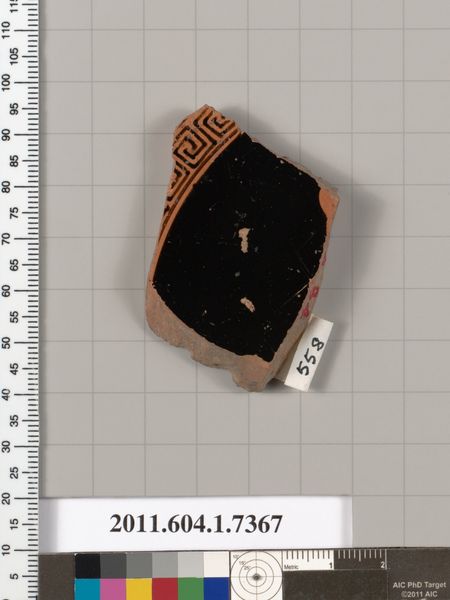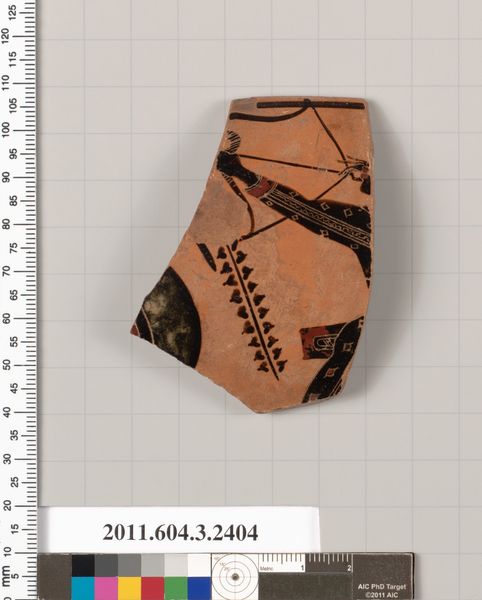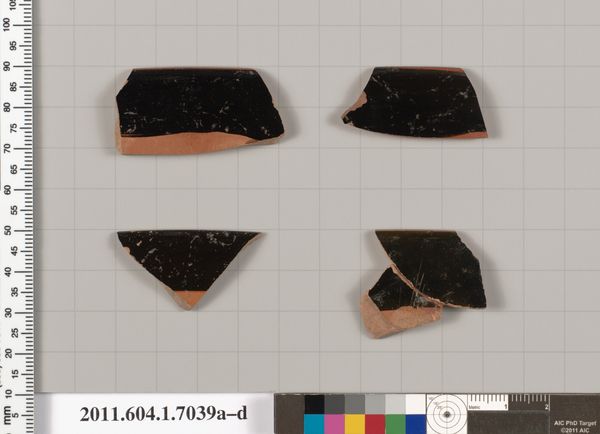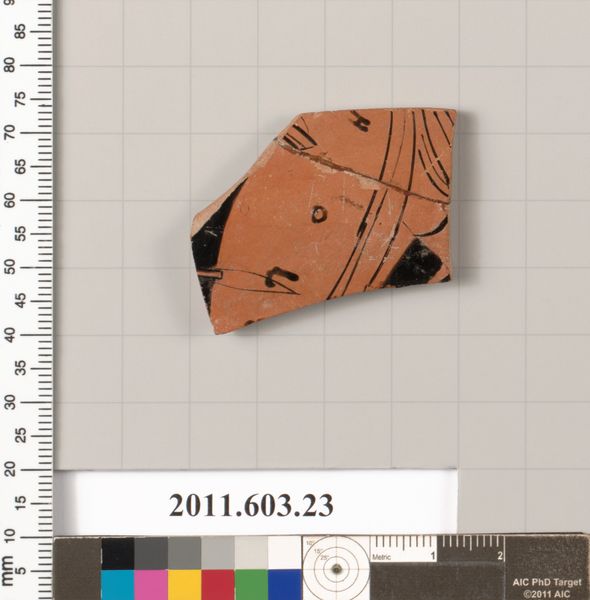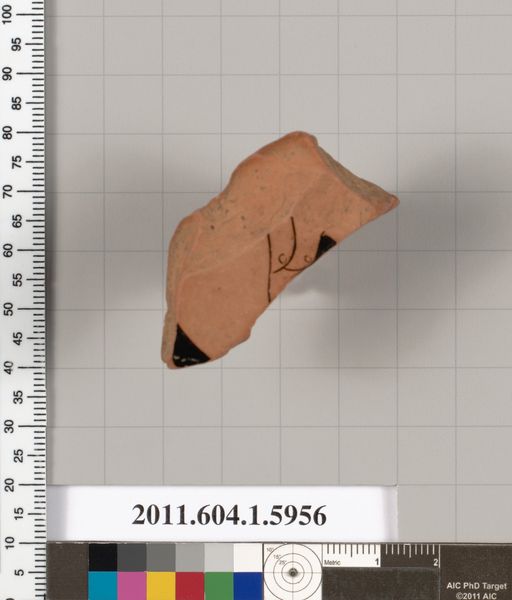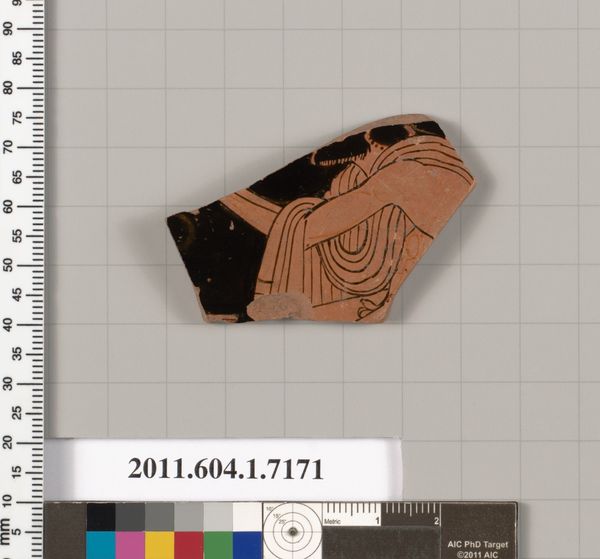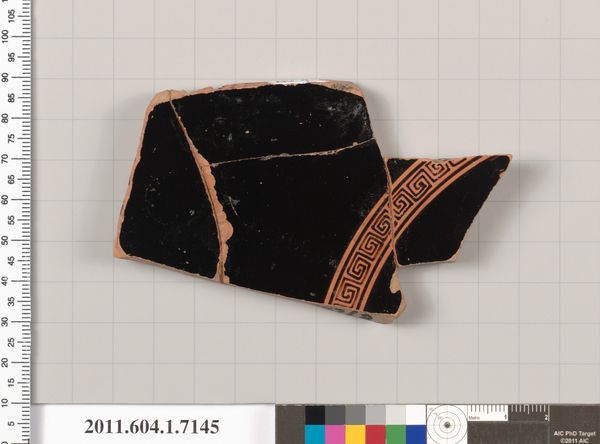
drawing, ceramic, terracotta
#
drawing
#
greek-and-roman-art
#
ceramic
#
vase
#
figuration
#
roman-art
#
terracotta
Copyright: Public Domain
Editor: Here we have a fragment of a terracotta kylix, a drinking cup, dating back to 530 BC, created by Makron. Only a section survives, but I'm intrigued by how much information can be gleaned from such a small piece of history. How would you interpret this fragment within its historical context? Curator: This fragment, like many surviving examples of Athenian pottery, offers a fascinating window into the social and cultural life of ancient Greece. Consider that kylixes, like this one, were not merely functional objects; they were integral to symposia—exclusive gatherings of aristocratic men. Editor: So, its purpose directly informed its cultural value. Curator: Precisely. The imagery decorating these vessels wasn’t arbitrary. It reflected and reinforced the values, myths, and ideologies of the Athenian elite. Who were the patrons and what messages were they hoping to convey with art? In addition, it highlights the crucial role the Athenian workshops played in creating objects with an economic value and a social message for a selected clientele. Editor: So this pottery, even in fragmented form, tells us about class and social gatherings. The black figure drawing is particularly striking and, one may see the level of luxury enjoyed within this elite class. It reminds me that objects are historical sources. Curator: Indeed. Analyzing such fragments forces us to consider not only what's present, but also what’s missing and why it matters. The state of preservation influences how we perceive the original function of these objects. Considering this, we should study it through social and economical lenses to help us analyze their role and relevance. Editor: This really shifts my perspective. Seeing it now as part of an elite dialogue makes it even more compelling. Curator: And recognizing how it shapes museum displays today adds yet another layer of historical and social complexity. We began appreciating its materiality and ending studying its purpose as part of our cultural heritage.
Comments
No comments
Be the first to comment and join the conversation on the ultimate creative platform.
